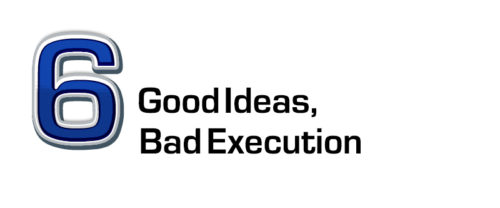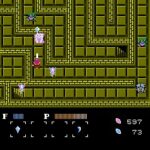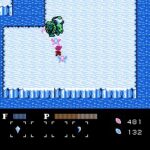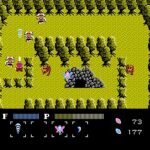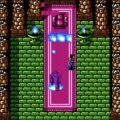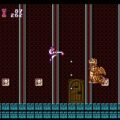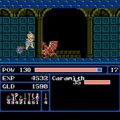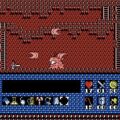Developer: Imagineer Publisher: Imagineer Release: 05/19/87 Genre: Action RPG
There were many action RPGs on the Famicom early in its life such as Hydlide and Romancia. These games while flawed tried to capture the sense of adventure that we all cherish. Things would change with the Legend of Zelda as that title revolutionized the market. The Famicom Disk System would soon be flooded with action RPGs in the same mold but none are as flagrant at patterning itself after Nintendo’s classic as Seiken Psycho Calibur. While the game will not win any awards for originality it at least did its homework and is enjoyable despite some annoying hiccups.
Many years ago there was a country called Earth Maral. One day Earth Maral was invaded by demons from the Dark World and torn apart. The people lived in fear, with their only hope being a legend…
‘A hero holding a sword will appear and restore peace to our land once again.’
But no one knew when this hero would arrive. Until today……
Seiken Psycho Calibur is one of many Famicom Disk System games that never left Japan. On its face this is surprising considering Zelda’s popularity in the West. The game has minimal text and would have been an easy localization. However the complete package has a notebook, maps, and cassette tape with important information necessary to complete the game. Even though there is a fan translation this one is all but impossible without a strategy guide as the previously mentioned items have clues for progression that are not in the game. This is not an easy one.
From its visual style to its mechanics and controls Seiken Psycho Calibur does its best to imitate Zelda. The overworld looks near identical; it has many of the same items such as a boomerang, bombs, and fairies that heal and even has caves with NPCs who offer cryptic clues. But there are differences. There is no continuous map; instead the world consists of nine individual areas. Each area has its own dungeons (some are nothing but a dungeon!) and towns if you can call them that. They are connected and you can backtrack if necessary. The fairies are equippable items that heal over time and grant access to more powerful swords temporarily. The bombs do not blow up walls surprisingly. Instead they put enemies to sleep, including bosses. These are on top of the key items such as keys, armor, and such.
Probably the biggest difference comes in the form of health. You have a traditional life bar but also a food level. Your food level drops every few seconds like Gauntlet but not as fast. If your food runs out your life will begin to drain. Enemies drop two kinds of seeds, red for food and blue for currency. Generally red seeds are plentiful and if you spend even a little time grinding early on you will not have to worry about food for the most part. Instead of heart containers enemies will randomly drop red tear stones that raise your maximum health. You do not really need cash for the most part although it helps immensely in the opening area. Here there are hidden shops that sell mid game items that are expensive. If you grind to buy them it will help immensely since you can never return.
Seiken Psycho Calibur offers the same level of freedom as Zelda in terms of completing objectives. The most immediate areas are easiest to complete. Each area has one or more bosses to defeat and you can immediately do so if you want. However there are often items to collect, some optional and some mandatory. Generally each area is about 10-12 twelve screens large so it is easy to get around. In addition there are technically only three or four dungeons in the game. While they follow the same room by room structure as Nintendo’s game they are more complex in their layout. In fact Area 4 is one massive dungeon that is more elaborate in its layout than most 8-bit RPGs. Despite the apparent simplicity of the game it is no less difficult than the game it takes after.
Most RPGs during the NES era were obtuse in terms of guiding the player. Seiken Psycho Calibur is just as bad as its contemporaries in this regard. It is compounded by the fact that the supplementary items it was packaged with that had clues necessary for the game are not in English so western players must rely on guides. The game offers little guidance and vague clues. Area 3 has pockets of quicksand dotting its map. These send you back to Area 1 if you accidentally step in them. But there is one that sends you to the next key area to continue the quest. You only receive a nebulous hint toward this. Similarly to open the doors to new areas you need to reach certain force levels. But some of the blue tear drops that raise this level are hidden and there are no hints to their location.
It is factors like this that bring down Seiken Psycho Calibur. While Zelda was often vague you could parse its hints and they made sense. Once you found the solution to each puzzle it is usually a eureka moment that makes sense. The game was completely playable from start to finish without a guide. I know because I did it when I was young. It took me a while but still. It is in this area that its imitators fail to match its standard and Seiken Psycho Calibur falls in that category. It has the look but lacks the subtle nuance that makes that game a classic. With its lack of instruction, tough bosses and cheap enemy placement plus lacking player resources it is a tough one. I can see most dropping it before completion.
In Closing
Seiken Psycho Calibur does its best to be the next Legend of Zelda. Unfortunately it does not quite hit the mark. They do their best but the devil is in the details. I like the game in spite of its flaws; even a moderate Zelda clone can be entertaining. However I don’t think I would outright recommend giving this one a spin unless you truly love Nintendo’s legendary series and want another game in that style.
